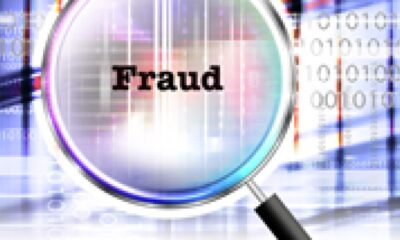Hiring signs outside a Stewart’s gas station in Catskill, New York, US, on Wednesday, Oct. 2, 2024.
Angus Mordant | Bloomberg | Getty Images
Powerful hurricanes and a major labor strike could take a chunk out of the nonfarm payrolls count for October, which is expected to be the slowest month for job creation in nearly four years.
Economists surveyed by Dow Jones expect the Bureau of Labor Statistics to report Friday that payrolls expanded by just 100,000 on the month, held back by Hurricanes Helene and Milton as well as the strike at Boeing. If accurate, it would be the lowest job total since December 2020 and a huge drop from September’s 254,000.
The report, which will drop at 8:30 a.m. ET, is also expected, however, to indicate that the unemployment rate will be unchanged at 4.1%.
“When we look through that [headline jobs number], the unemployment rate will remain low, and I think wages will grow faster than inflation, and both those things are going to underscore the health of the U.S. economy,” said Michael Arone, chief investment strategist at State Street Global Advisors.
On wages, average hourly earnings are projected to rise 0.3% for the month and 4% from a year ago, the annual figure being the same as September and furthering the narrative that inflation is sticky but not accelerating.
Whatever the results, markets may choose to look through the report as so many one-time hits dampened hiring.
“The top line numbers will be a little bit noisy, but I think there’ll be enough there to continue to determine that the soft landing is intact and that the U.S. economy remains in good shape,” Arone added.
The hurricanes caused what could be historic levels of monetary damage, while the Boeing strike has sidelined 33,000 workers.
Goldman Sachs estimates that Helene could shave as much as 50,000 off the payrolls count, though Hurricane Milton probably happened too late to impact the October count. The Boeing strike, meanwhile, could lower the total by 41,000, added Goldman, which is forecasting total payrolls growth of 95,000.
Data has been solid
Yet indicators leading up to the much-watched jobs report show that hiring has continued apace and layoffs are low, despite the damage done from the storms and the strikes.
Payrolls processing firm ADP reported this week that private companies hired 233,000 new workers in October, well above the forecast, while initial jobless claims fell to 216,000, equaling the lowest level since late April.
Still, the White House is estimating that the events cumulatively may hit the payrolls count by as many as 100,000. The “disruptions will make interpreting this month’s jobs report harder than usual,” Jared Bernstein, chair of the Council of Economic Advisers, said Wednesday.
Jobs numbers in general have been noisy in post-Covid era.
Earlier this year, the BLS announced benchmark revisions that knocked off 818,000 from previous counts in the 12-month period through March 2024. Year to date through July, revisions have taken a net 310,000 off the initial estimates.
“This report will reinforce the big picture, which is that the labor market is still growing. But the fact is that it’s growing but slowing,” said Julia Pollak, chief economist at ZipRecruiter. “Growth is slowing and also becoming more narrowly concentrated in just a couple of sectors.”
Leading areas of job creation this year have been government, health care and leisure and hospitality. Pollak said that continues to be the case, particularly for health care, while ZipRecruiter also has seen more interest in skilled trades along with finance and related businesses such as insurance.
However, she said the general picture is of a slowing market that will need some help from Federal Reserve interest rate cuts to stop the slide.
“For the last two quarters now, job growth has been below the pre pandemic average, and job gains have been unusually narrowly distributed,” Pollak said. “That has real effects on job seekers and workers who felt their leverage erode, and many of them are struggling to find sort of acceptable jobs. So I do think the Fed’s attention should be firmly on the labor market.”

 Accounting1 week ago
Accounting1 week ago
 Finance1 week ago
Finance1 week ago
 Personal Finance1 week ago
Personal Finance1 week ago
 Blog Post1 week ago
Blog Post1 week ago
 Accounting1 week ago
Accounting1 week ago
 Economics1 week ago
Economics1 week ago
 Personal Finance1 week ago
Personal Finance1 week ago
 Personal Finance1 week ago
Personal Finance1 week ago























